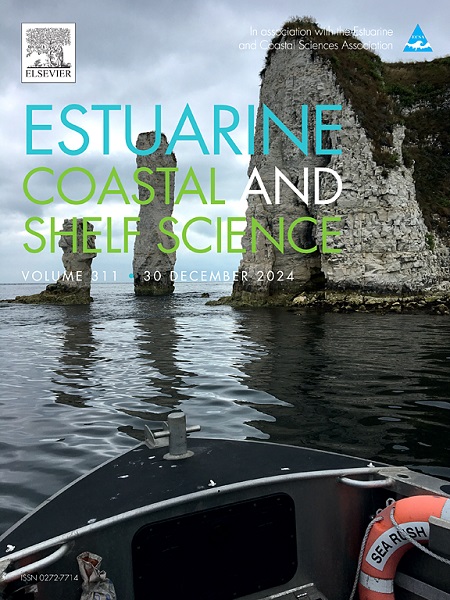改进遥感能力对蓝碳量化的影响
IF 2.6
3区 地球科学
Q1 MARINE & FRESHWATER BIOLOGY
引用次数: 0
摘要
遥感能力的重要发展使生态系统制图的准确性得以提高。更高的空间分辨率图像可以更精确地对土地利用和土地覆盖类别进行分类,从而改变我们对地图上的陆地和海景的描述。这些变化影响着我们如何看待这些生态系统,以及我们如何量化它们的生态系统服务和对人类的好处。在这里,我们研究了最近的制图进展如何影响红树林生态系统中用于气候变化调节的蓝碳量化,使用地点,国家和全球尺度计算。总的来说,我们发现更高分辨率的图像与红树林覆盖面积的减少有关,因此碳储量估计也较低。重要的是,这些细微差别在蓝碳核算和更广泛的生态系统服务中得到采纳和校准,这样它们就不会破坏旨在保存和保护这些关键生态系统的重要举措,如国家自主贡献。本文章由计算机程序翻译,如有差异,请以英文原文为准。

Implications of improved remote sensing capabilities on blue carbon quantification
Important developments in remote sensing capabilities allow for improved accuracy in the mapping of ecosystems. Higher spatial resolution imagery enables more precise classification of land use and land cover categories, which therefore changes our characterization of mapped land- and seascapes. These changes impact how we visualize these ecosystems, and how we quantify their ecosystem services and benefits to people. Here we examine how recent mapping advances influence the quantification of blue carbon for climate change regulation in mangrove ecosystems, using site, national, and global scale calculations. Overall, we found that higher resolution imagery was associated with a reduction in mangrove cover, and hence lower carbon stock estimates. It is important that these nuances are adopted and calibrated within the accounting of blue carbon, and ecosystem services more broadly, so that they do not undermine important initiatives designed to conserve and protect these critical ecosystems, such as Nationally Determined Contributions.
求助全文
通过发布文献求助,成功后即可免费获取论文全文。
去求助
来源期刊
CiteScore
5.60
自引率
7.10%
发文量
374
审稿时长
9 months
期刊介绍:
Estuarine, Coastal and Shelf Science is an international multidisciplinary journal devoted to the analysis of saline water phenomena ranging from the outer edge of the continental shelf to the upper limits of the tidal zone. The journal provides a unique forum, unifying the multidisciplinary approaches to the study of the oceanography of estuaries, coastal zones, and continental shelf seas. It features original research papers, review papers and short communications treating such disciplines as zoology, botany, geology, sedimentology, physical oceanography.

 求助内容:
求助内容: 应助结果提醒方式:
应助结果提醒方式:


